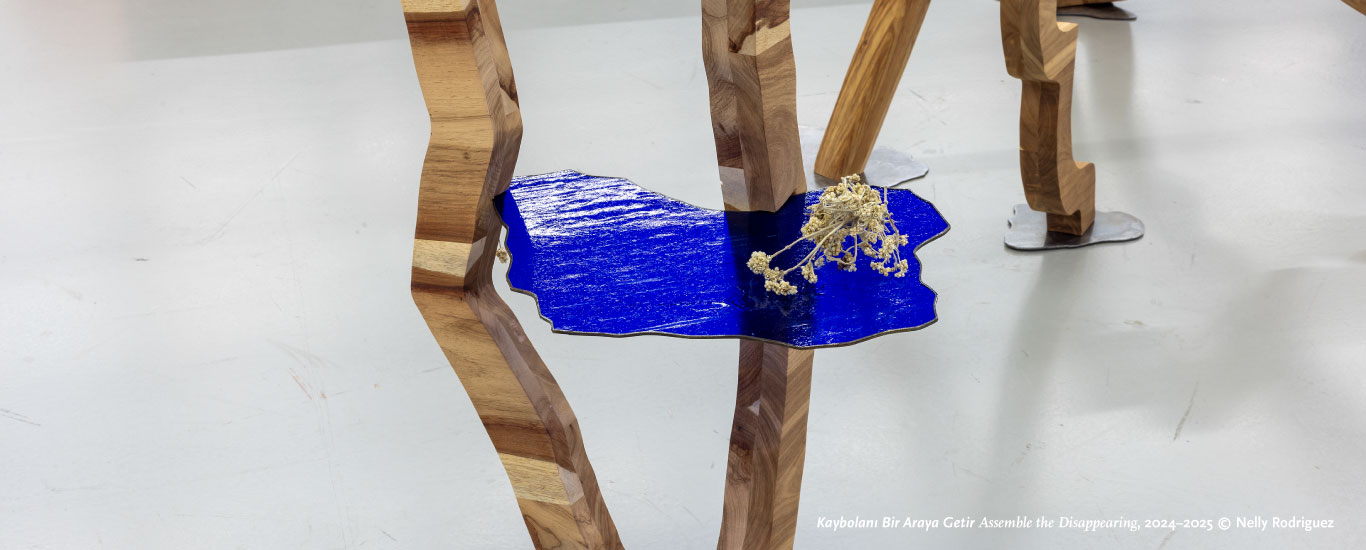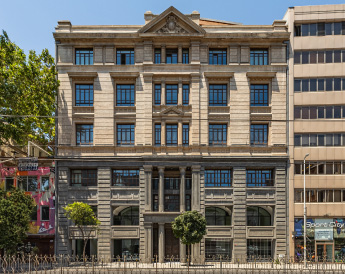Assemble the Disappearing (2024–2025) greets viewers through a maze-like, post-organic terrain whose twists and breaks suggest discontinuity and collapse. Composed of wood, stained glass, mpepho, and Gqunta’s signature razor wire, the work draws inspiration from radical anti-colonial thinker Amílcar Cabral, an agronomist, engineer and political leader who championed pan-African liberation by emphasising a return to the land. For Cabral, land was not just territory: it was an active agent in the revolutionary process, a living ground for resistance and regeneration.
Gqunta’s sculptures expose the landscapes scarred by extraction and violence, while the fragile glass elements act as lenses through which past and present traumas are refracted, made visible and potentially repaired.
ARTIST BIOGRAPHY
Lungiswa Gqunta (b.1990, Gqeberha) is an artist living and working in Cape Town practising performance, printmaking, sculpture and installation. She deconstructs spatial modes of exclusion and oppression by addressing access to and ownership of land, unravelling multisensory experiences that highlight persistent social imbalances – legacies of both patriarchal dominance and colonialism. Gquanta’s solo exhibitions are Sleep in Witness, WHATIFTHEWORLD, Cape Town (2023) and the Henry Moore Institute, Leeds (2022); Tending to the harvest of dreams, Museum MMK für Moderne Kunst, Frankfurt (2021). Group exhibitions include Black Ancient Futures, MAAT, Lisbon (2024); the 8th Yokohama Triennial (2024); the 12th Liverpool Biennial (2023).
EXHIBITED WORKS
Lungiswa Gqunta (b. 1990)
Assemble the Disappearing, 2024–2025
Wood, stained glass, razor wire, mpepho
Variable dimensions
Courtesy of the artist and WHATIFTHEWORLD








